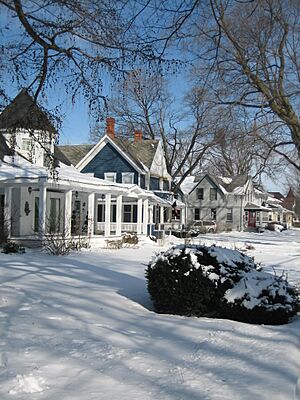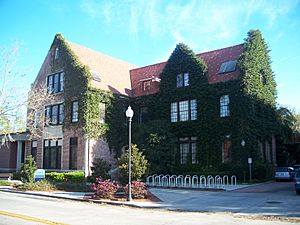Historic districts in the United States facts for kids
Historic districts in the United States are special areas that recognize a group of buildings, properties, or sites for their important history or unique architecture. These districts are chosen by different groups at various levels of government. Buildings and other features within a historic district are usually split into two groups: those that contribute to its historic value and those that don't. Historic districts can be very different in size. Some have hundreds of buildings, while others might only have a few.
The U.S. federal government, through the National Park Service, officially recognizes historic districts. These federally recognized districts are listed on the National Register of Historic Places. However, being listed on this Register usually doesn't stop property owners from doing what they want with their buildings. State-level historic districts might have similar rules, or they might ask owners to follow certain guidelines for fixing up old buildings.
Local historic districts offer the most legal protection for historic properties. This is because most decisions about how land is used are made by local governments. Local districts are usually managed by county or city governments.
Contents
How Historic Districts Started
The very first historic district in the U.S. was created in Charleston, South Carolina, way back in 1931. This was more than 30 years before the federal government started its own program! Charleston's city government named an "Old and Historic District" and set up a group to watch over it.
New Orleans followed in 1937, creating the Vieux Carré Commission. This group was given the power to help keep the historic look of the city's French Quarter. Other cities, like Philadelphia, also started their own historic preservation rules in the 1950s.
The power of local groups and historic districts to make rules has been supported by courts. A very important case in 1978, Penn Central Transportation Co. v. City of New York, confirmed that protecting historic places is a fair goal for the government.
In 1966, the federal government created the National Register of Historic Places. This happened after a report said that Americans felt a bit "rootless" or disconnected from their past. By the 1980s, thousands of historic districts were recognized by the federal government.
Types of Properties in Historic Districts
Historic districts generally have two kinds of properties: contributing and non-contributing.
- A contributing property is any building, structure, or object that adds to the history or special look of a historic district. These properties are key parts of what makes the district historic.
- A non-contributing property does not add to the historic value of the district. This might be because it was built much later, or it has been changed too much.
Besides these two types, properties listed on the National Register of Historic Places are also put into five main groups: building, structure, site, district, and object. Each has a specific meaning for the National Register.
Federal Historic Districts
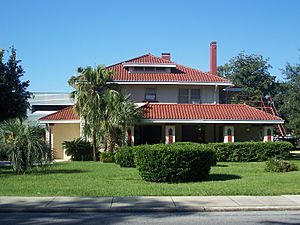
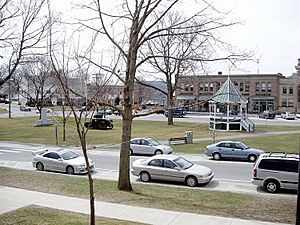
When a historic district is listed on the National Register of Historic Places, it means the U.S. government officially recognizes it. This is mostly an "honorary status" that comes with some federal money benefits.
The National Register of Historic Places defines a historic district as: "a specific area, in a city or countryside, that has a lot of important sites, buildings, structures, or objects. These are connected by past events or by how they were planned or built. A district can also include separate parts that are linked by history."
Getting listed on the National Register usually starts with a nomination. The National Register is the official way the U.S. government recognizes important cultural places that should be saved.
A federal listing offers some protection, but only if the action that might harm the district involves the federal government. For example, if a company wants to tear down an old house and that company is working for the federal government, then the house would be protected. But if the company is working for a state government, the federal listing offers no protection. So, a federal listing is mainly a way for the government to say, "This place is worth saving!"
Usually, the National Register doesn't list religious buildings, buildings that have been moved, or buildings that are less than 50 years old. However, if these types of properties are important parts of a historic district that does meet the rules, then they can be included.
Also, if most property owners in a proposed historic district object to the listing, the nomination can be stopped.
State Historic Districts
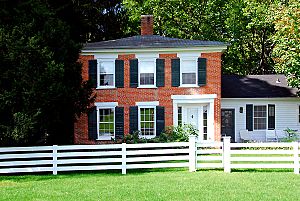
Most U.S. states have their own lists similar to the National Register of Historic Places. Being listed on a state register can offer benefits like tax breaks. Also, the property might be protected by specific state laws. These state laws can be similar to or different from the federal guidelines.
A state listing on a "State Register of Historic Places" is often an "honorary status," just like the National Register. For example, in Nevada, being on the State Register doesn't limit what property owners can do. But in Tennessee, state law requires property owners in historic districts to follow strict rules from the U.S. Department of Interior when they change their properties.
Even though all states must have a State Historic Preservation Office, not all states have a "state historic district" designation. For example, in 2004, North Carolina did not have such a designation.
Local Historic Districts
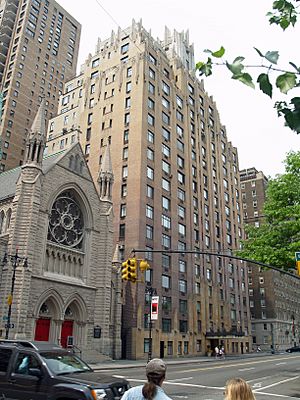
Local historic districts usually have the strongest legal protection against anything that might harm their historic look. This is because many decisions about land use are made at the local level. There are over 2,300 local historic districts in the United States. These districts can be managed by county or city governments, both of which make decisions about land use.
Local historic districts are created by looking at historic places and drawing clear boundaries. Property owners are always told about the plans and given a chance to share their thoughts. Depending on local rules, their permission might even be needed.
Most local historic districts have specific rules about how properties in the district can be changed. For small changes, homeowners can talk to local preservation staff and get advice or permission. But for bigger changes, homeowners need to apply for a "Certificate of Appropriateness" (COA). These big changes might be decided by a historic commission or architectural review board. This COA process involves formal notices, hearings, and fair decisions.
The city of Charleston, South Carolina, is known for starting the modern historic district movement. In 1931, Charleston passed a law that created an "Old and Historic District" managed by a Board of Architectural Review. Charleston's early law showed how much protection local historic districts can have. It said that no changes could be made to any part of a building that could be seen from the street. Local historic districts, like those in New Orleans and Savannah, Georgia, existed 10 or more years before the National Register.
Local historic districts can sometimes face resistance because of the rules they place on property owners. These local laws can require residents to follow specific rules.
Many homeowners worry about how local historic districts affect property values. Studies have shown that property values in local historic districts often go up faster than in other areas. In the worst cases, they go up at the same rate as the rest of the market. This means historic districts usually make property values better.
For example, a 2011 study in Connecticut found that property values in every local historic district increased by 4% to over 19% per year on average. In New York City, between 1980 and 2000, properties in local historic districts increased in value much more than properties not in such districts. Also, properties in local historic districts were found to handle market downturns better. A recent study found that properties in designated districts were much less likely to face foreclosure. This shows that local historic district status helps protect property values and makes the housing market more stable.
Why Historic Districts Are Important
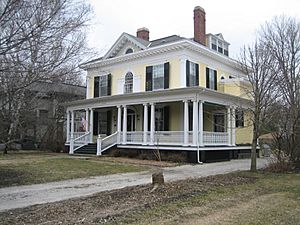
At first, American historic districts were seen as protective areas around single, very important historic sites. But as historic preservation grew, people realized that the buildings around these sites were also key parts of the area's history. Preservationists began to think that districts should include a mix of buildings, streets, open spaces, and landscaping. This blend helps define the historic character of a whole area.
By 1981, the National Trust for Historic Preservation had found 882 American cities and towns with some form of "historic district zoning" in place. These were local laws specifically made to protect historic districts.
Before 1966, historic preservation in the U.S. was quite new. That year, the U.S. Conference of Mayors wrote an important report. It said that Americans felt a sense of "rootlessness" and suggested that historic preservation could help people feel more connected to their past. The creation of the National Register of Historic Places in 1966, right after this report, helped create that sense of connection. The mayors also suggested that historic preservation programs should not just focus on single properties. Instead, they should also focus on "areas and districts which have special meaning for the community." Today, local, state, and federal historic districts include thousands of historic properties across all levels of government.
Images for kids
-
Charleston, South Carolina is home to the first historic district protected by local laws in the United States
-
The Fleur-de-lys Studios is a contributing property to Providence's College Hill Historic District
-
The Dakota belongs to the Central Park West Historic District (a federally recognized district) as well as the Upper West Side/Central Park West Historic District (a locally recognized district).
See also
 In Spanish: Distrito histórico (Estados Unidos) para niños
In Spanish: Distrito histórico (Estados Unidos) para niños


